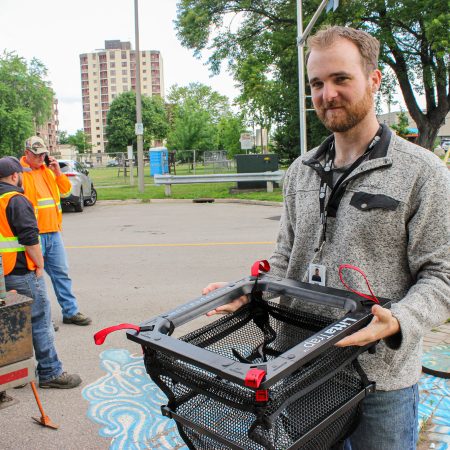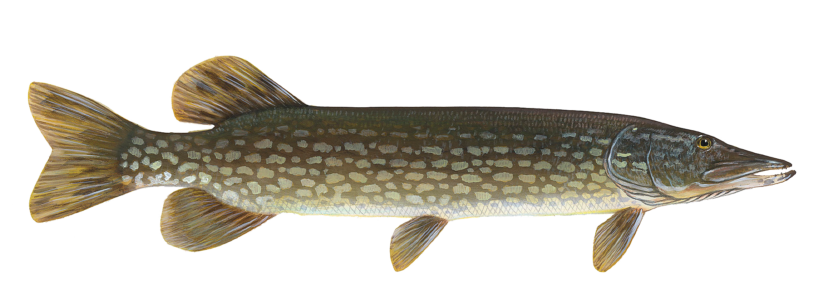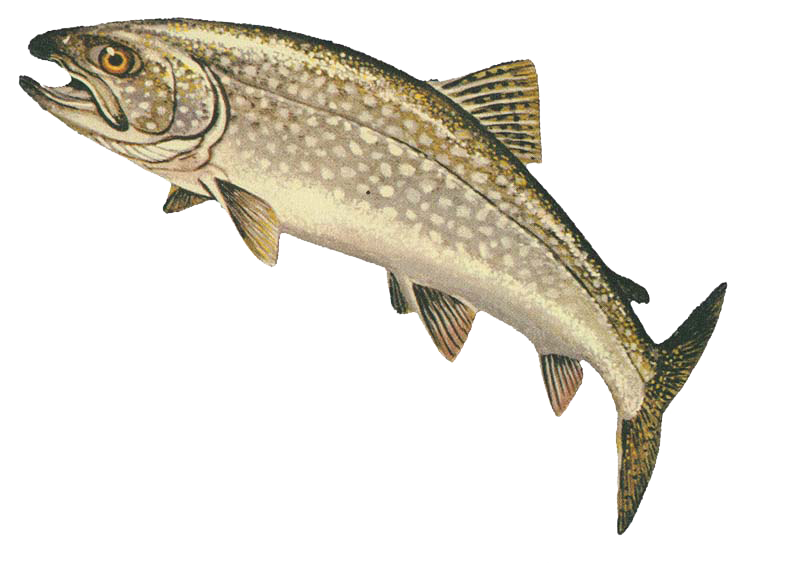We are thrilled to announce the launch of an innovative pilot project aimed at combating plastic pollution in our local waterways. Our project, “Trapping the Flow,” will involve the installation of eight Litta Traps in stormwater drains at the intersection of Bay and East Street, near the Sault Ste. Marie Public Library – James L. McIntyre Centennial Library. These traps are specifically designed to capture plastic pollution and other contaminants while allowing the sewer grates to maintain water flow. Over the 6-month pilot project, Lake Huron North staff will be assessing how much and what kind of plastic pollutants are being captured by the Litta Traps.
Why is Plastic Pollution a Pressing Issue?
Plastic pollution poses a significant threat to the delicate balance of freshwater ecosystems and has a detrimental impact on water quality and ecosystem health. The Trapping the Flow project aims to address this issue by intercepting plastic waste before it reaches our waterways. Here are some key ways in which plastic pollution affects water quality:
1. Contamination: Non-biodegradable plastics break down into microplastics, which contaminate freshwater bodies with harmful chemicals and additives present in the plastic, endangering aquatic life and overall ecosystem health.
2. Chemical Leaching: Plastics release hazardous substances into the water as they are broken down by UV rays, wave action, and chemical reactions.
3. Habitat Degradation: Accumulations of plastic debris suffocate aquatic vegetation and animals, leading to the degradation of important habitats such as wetlands and marshes, thereby disturbing the ecological balance.
4. Altered Food Chains: Plastics mistaken for food by aquatic organisms enter the food chain, accumulating and potentially causing long-term harm to species’ health.
The impact of plastic pollution on Great Lakes communities is significant. Plastic pollution indirectly affects human health through contaminated drinking water and food sources such as fish. By addressing plastic pollution at its source, we aim to mitigate the risks associated with consuming fish contaminated with microplastics, protecting the health and well-being of our community members. The Trapping the Flow project not only aims to improve water quality but also contributes to waste reduction by preventing plastic waste from clogging drains and ending up in recreational areas such as beaches.
Economic and Social Implications
Furthermore, plastic pollution has economic implications for our community. Tourism and associated revenue may decline in coastal areas heavily affected by plastic pollution. Communities relying on fishing and marine-based livelihoods also suffer when plastic pollution disrupts ecosystems and reduces fish populations. Additionally, the presence of plastic debris in natural environments diminishes the aesthetic value of our shorelines, impacting the overall enjoyment of our community.
Looking Towards a Cleaner Future
We hope that the installation of Litta Trap Filters in this pilot project will prove successful in trapping plastic pollution, paving the way for further installations in the future. By addressing the environmental, economic, and health-related impacts of plastic pollution in the Great Lakes, we can create a cleaner and healthier community for everyone to enjoy.
As conscientious individuals, we have the power to make a difference by reducing our plastic usage. By making small but meaningful changes in our daily lives, we can collectively contribute to a cleaner and more sustainable world. Here are some practical tips on how you can reduce your plastic consumption:
1. Embrace Reusable Bags
One of the most straightforward steps to reduce plastic usage is to swap single-use plastic bags for reusable ones. Carry a durable cloth or jute bag whenever you head to the grocery store or any shopping trip. Reusable bags not only cut down plastic waste but are also sturdier and can hold more items.
2. Choose Refillable Water Bottles
Instead of purchasing bottled water regularly, invest in a reusable water bottle made from stainless steel, glass, or BPA-free plastic. By doing so, you can help minimize the staggering number of single-use plastic water bottles that end up in landfills or the ocean.
3. Opt for Bulk Purchases
Buying in bulk not only saves you money but also reduces the need for excessive plastic packaging. Choose products that are sold in bulk or loose items, and bring your own containers to stores or markets. This small change can significantly cut down your plastic waste over time.
4. Ditch Single-Use Straws and Cutlery
Plastic straws and cutlery are among the most common items found in beach cleanups. Refrain from using single-use plastic straws and consider using reusable alternatives like metal or bamboo straws. Similarly, carry a set of reusable cutlery made from stainless steel or bamboo when eating on-the-go.
5. Say No to Plastic Packaging
When grocery shopping, try to avoid products that come with excessive plastic packaging. Instead, opt for items with minimal or eco-friendly packaging. Choosing fresh produce over pre-packaged items not only reduces plastic waste but also promotes healthier eating habits.
6. Bring Your Own Containers
Whether you’re getting takeout food or buying items from the deli section, consider bringing your own containers. Many restaurants and stores are supportive of this eco-friendly practice, and it helps cut down on the number of disposable plastic containers used.



